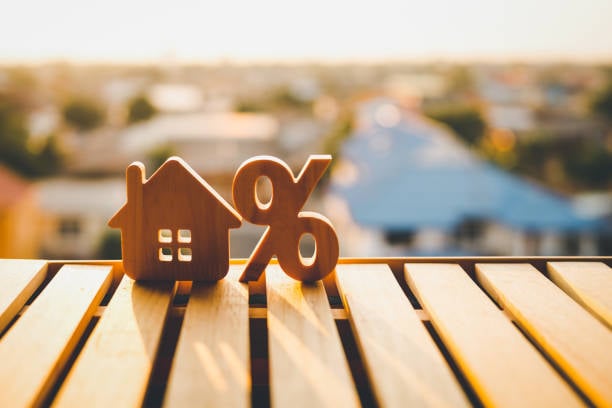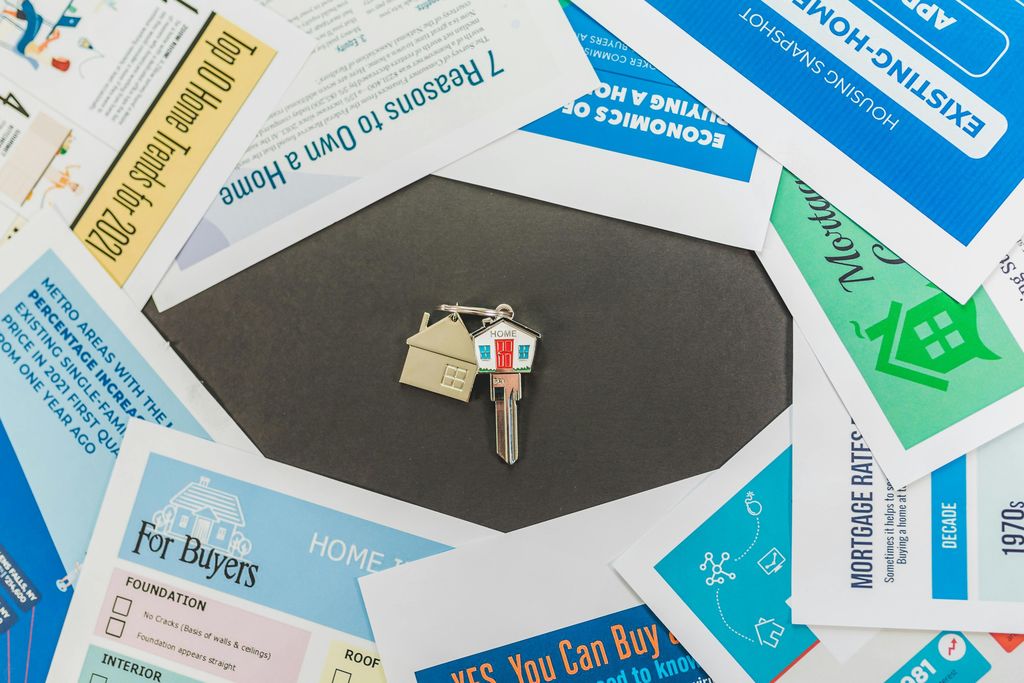The Federal Reserve recently announced a rate cut, and many expected mortgage rates to follow. Instead, the opposite happened, mortgage rates went up.For families across San Gabriel Valley and North Orange County, this unexpected twist has caused confusion. Buyers are asking: If the Fed lowered rates, why are mortgage lenders quoting higher numbers? Sellers are wondering: Will rising rates reduce demand? Should I list my home now or hold off? In this article, we’ll break down the 10 key insights buyers, sellers, and investors need to understand about the Fed’s decision and today’s housing market. You’ll also find practical strategies to help you move forward with clarity and confidence during this shifting moment.
The Fed Doesn’t Directly Control Mortgage Rates
Let’s start with the biggest myth: the Fed does not set mortgage rates.
Here’s how it works:
The Fed sets the federal funds rate, which influences short-term borrowing between banks.
Mortgage rates are tied more closely to the 10-year Treasury yield.
That yield moves based on investor confidence, inflation, and global events.
This means the Fed can cut rates, but mortgage lenders still look at long-term risks. If inflation looks sticky, or if investors are worried about the future, mortgage rates may climb even after a cut.
Mortgage Rates Dropped Before the Fed’s Announcement
Leading up to the Fed’s decision, mortgage rates actually fell. Why?
Investors assumed the Fed would cut, so they started moving money into bonds.
This surge of demand lowered yields, which temporarily lowered mortgage rates.
Buyers who locked their rate before the Fed’s announcement benefited.
This is a reminder that the housing market moves in anticipation of news, not just after it. By the time headlines hit, the best opportunity may already have passed.
Why Mortgage Rates Rose After the Fed Cut?
So why did rates rise after the cut? It comes down to tone and perception.
The Fed’s statement was cautious. They acknowledged inflation risks and signaled they may not cut aggressively going forward. Investors read between the lines and adjusted their expectations.
Result: bond yields rose, and mortgage lenders pushed rates higher.
Key takeaway: It’s not just the Fed’s move that matters, it’s how investors interpret the message.
Lessons From Last Year’s Market
This isn’t the first time we’ve seen this play out. In 2024, mortgage rates also shifted in anticipation of Fed actions, not after.
Buyers who waited for official announcements often missed better rates.
Those who acted early, based on trends, not headlines, saved thousands.
For homeowners in Brea, Chino, or Fullerton, this history is important. Timing matters, and waiting for the Fed may not always work in your favor.
The Tug-of-War: Inflation vs. Economic Weakness
The economy is caught in a tug-of-war:
Weak growth and job market signals should push rates lower.
Sticky inflation keeps rates higher.
This back-and-forth is why mortgage rates keep bouncing around. One week, rates dip. The next, they climb back.
For buyers, this creates opportunity. If you’re prepared, you can lock in during a temporary dip. For sellers, it means buyers may act quickly when rates ease, creating bursts of activity.
Consumer Confidence Shapes Mortgage Rates
Mortgage rates don’t move only on data, they also move on confidence.
When consumer sentiment is shaky:
Investors demand higher yields on bonds.
Mortgage lenders pass that cost to buyers.
Think of it this way: if the public feels uncertain about the future, lenders become more cautious about lending money long-term.
This explains why rates don’t always drop, even when Fed policy gets looser.
What Buyers Should Do in This Market?
For buyers, even small shifts in rates matter:
At a $700,000 purchase price, the difference between 6.5% and 7% interest could mean over $200 per month in extra payments.
That adds up to more than $70,000 over 30 years.
Strategies buyers can use:
Stay pre-approved and ready: Have your lender on call so you can lock in quickly if rates dip.
Consider rate buydowns: Many sellers and builders are offering credits to buy down interest rates temporarily.
Look at adjustable-rate mortgages (ARMs): If you plan to move in 5–7 years, an ARM might save you thousands.
Negotiate with sellers: In today’s market, motivated sellers may cover closing costs or even help reduce your effective rate.
In San Gabriel Valley, buyers who act strategically can still find affordable opportunities despite the headlines.
Seasonal Trends: Why Fall Can Be the Best Time to Buy?
Spring is the busiest real estate season, but fall offers hidden advantages:
Less competition: Many buyers step back, leaving you with more negotiating power.
Motivated sellers: Homeowners often want to close before the holidays or year-end.
Softer prices: Without multiple-offer battles, sellers may be more flexible.
Combine these seasonal factors with rate dips, and fall 2025 could be a golden window for buyers.
What Sellers Should Know Right Now?
For sellers in North Orange County, higher rates may sound scary, but they don’t have to derail your plans.
Here’s how to stay competitive:
Price smartly: Overpricing leads to long days on market. Use local comps and be realistic.
Offer incentives: Covering a buyer’s closing costs or offering a rate buydown can make your listing more attractive.
Stage effectively: A clean, neutral, move-in ready home still commands attention.
Highlight long-term value: Emphasize upgrades, school districts, or features that stand out beyond rates.
Homes in Brea, Yorba Linda, and Chino Hills are still moving quickly when priced and marketed well.
Investors Are Coming Back
After sitting out much of 2024, investors are starting to re-enter the housing market.
Rental demand is rising, especially in Southern California.
Buyers priced out of ownership are turning to rentals, keeping vacancy rates low.
Investors see this as an opportunity to lock in properties for long-term gains.
For everyday buyers, this means more competition in certain neighborhoods. But it also stabilizes the market, keeping demand strong.
How Buyers Can Protect Themselves?
Given all this uncertainty, buyers should:
Work with an experienced local agent who monitors daily rate changes.
Get quotes from multiple lenders, small differences can save thousands.
Budget conservatively so a small rate increase doesn’t break your plan.
Look at total cost of ownership, not just the rate. Taxes, HOA fees, and maintenance matter too.
In areas like Covina, Diamond Bar, and Rowland Heights, where demand stays strong, these steps help buyers stay competitive.
Why This Could Be the Best Window of 2025?
Despite all the noise, this moment may be one of the best opportunities all year.
Here’s why:
Rates, while higher than expected, are still below last year’s peaks.
Inventory is low, but so is buyer competition.
Sellers are motivated to move before the end of the year.
Seasonal trends favor buyers who act now.
For both buyers and sellers in San Gabriel Valley and North Orange County, waiting could mean more competition in spring, and possibly higher prices.
Conclusion
The Fed’s latest rate cut confused a lot of people. Instead of dropping, mortgage rates went up. But once you understand how investor expectations, inflation, and consumer confidence play into the housing market, it makes sense.
For buyers, the message is clear: stay ready, act quickly when rates dip, and use strategies like buydowns or ARMs to keep payments affordable. For sellers, smart pricing and incentives keep your home attractive. And for investors, today’s rental demand creates strong long-term opportunities.
This may be one of the best windows of 2025 to buy or sell in Southern California. If you’ve been waiting for the “right” time, this could be it.
Want to understand how the Fed rate cut is impacting mortgage rates and the housing market in San Gabriel Valley and North Orange County?
Jack Ma Real Estate with Century 21 Masters breaks it all down in a way that’s clear and easy to follow.
Watch the full update here: Fed Rate Cut & Mortgage Rates Explained
If you’re planning to buy, sell, or invest in today’s market, this video is a must-see. After you watch, reach out to Jack Ma Real Estate to discuss the best strategy for your goals.
FAQs
1. Why did mortgage rates go up after the Fed cut rates?
Because markets reacted more to the Fed’s cautious tone about inflation than the cut itself. Bond yields rose, which pushed mortgage rates higher.
2. Should I wait for rates to fall further before buying?
Not necessarily. Rates may dip, but seasonal advantages in fall often matter more. Lower competition and motivated sellers can offset higher rates.
3. How can sellers attract buyers in a high-rate environment?
By pricing realistically and offering credits like closing cost help or temporary rate buydowns.
4. Is fall really a good time to buy a home in San Gabriel Valley?
Yes. Buyers face less competition, and sellers are often more flexible before the holidays.
5. Will mortgage rates drop again in 2025?
It depends on inflation and economic data. Rates could ease if the economy slows, but volatility will remain.





